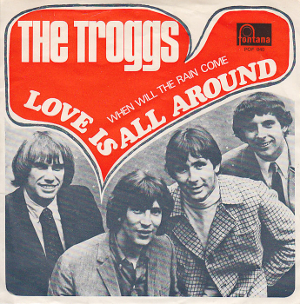British schools:
- What is the difference between a ‘comprehensive school’ and a ‘grammar school’? From the age of 11 to at least 16, most state schools are comprehensive schools in which children of all abilities are taught since they do not select children on the basis of academic achievement or aptitude and they teach a comprehensive range of subjects across the academic and vocational spectrum. Comprehensive schools were introduced to replace old grammar and secondary modern schools. Grammar schools offered more academic education and they were aimed at the academically gifted (with entrance determined by a selection exam: the 11+ exam). Children who did not pass the selection test or who did not achieve scores in the top 25% attended technical schools or secondary modern schools.
- A ‘secondary school’ is a school for pupils aged 11-16.
- What is the difference between ‘further education’ and ‘higher education’? higher education is compulsory whereas further education is not.
- Children in the UK have to legally attend primary and secondary education, which runs from about 5 years old until the student is 16 years old.
- The education system in the UK is also split into key stages: Key Stage 1 (from 5 to 7 years old);
- Key Stage 2 (from 7 to 11 years old); Key Stage 3 (from 11 to 14 years old); and Key Stage 4 (from 14 to 16 years old).
- What is the name for a school that is funded by the government so pupils don’t have to pay fees? state school
- What is a ‘public school’? Give some examples of famous public schools.A school run mainly with private funds, requiring a fee from students. A well-known public school is Eton, where many British politicians and peers have studied. Prince William and Prince Harry have also been Etonians. Other top public schools are St.Paul’s, Rugby or Westminster, all belonging to the nine “Clarendon Schools” which are regarded as being amongst the leading educational establishments in England, with excellent academic records.
- The National Curriculum was introduced by the UK government under the Education Reform Act of 1988. It consists of a set of core nd foundation subjects. The core subjects are English, maths and science, and the foundation subjects are design & technology, information and communication technology (ICT), history, geography, art & design, music, physical education, modern foreign languages (Key Stage 3 only) and citizenship (Key Stage 3 and 4 only).
- The most important assessment occurs at age 16 when students pursue their GCSE’s or General Certificate of Secondary Education.
- The Cerificate of Education Advanced Level (A-level)
is obtained by the age of 18 and the grades obtained will be taken into account when applying for a place in Higher Education. - What are ‘vocational qualifications’? They can range from general qualifications where students learn skills relevant to a variety of jobs, to specialist qualifications designed for a particular sector.
-
Universities fall into four broad categories:
the ancient English foundations
(Cambridge and Oxford, founded in the 13th and 14th centuries
respectively),
the ancient Scottish ones
(Glasgow, Edinburgh, St Andrews and Aberdeen, all founded in the
15th and 16th centuries),
the ‘redbrick’ universities
(founded in the major industrial cities of England in the Victorian
era),
and the ‘plateglass’ ones
(founded in the 1960s).
- There is also a successful Open University, which uses a variety of methods for distance learning.
- The first degree offered at British universities is
the Bachelor’s degree (typically three years). - During a first degree students are known as undergraduates.
- Students who have completed a first degree are eligible to undertake a postgraduate degree, which includes a Master‘s degree (typically taken in one year) or a Doctorate’s degree (typically taken in three years).
American schools:
- In the USA compulsory education is divided into three levels: elementary school, middle school and high school.
- Children are divided by age groups into grades.
- Elementary school covers education from 6/7 year-old to 10/11 year-old, going from 1st grade to 6th grade.
- Middle school covers from 6th to 8th grade (from 11/12 year-old to 13/14 year-old)
- High school covers from 9th to 12th grade (from 14/15 year-old to 17/18 year-old).
- The last four grades in high school are called freshman, sophomore, junior and senior.
- A major characteristic of American schools is the high priority given to extracurricular activities, such as sports, clubs, orchestras…
- High schools have guidance counselors to whom children can go privately if they have any problems, especially about their careers.
- At the end of the 12th grade, students attend the ‘prom’ event, which is a very formal dance where girls wear long evening dresses and boys wear tuxedos.
- The completion of High School (when students obtain the High School Diploma) is called graduation and it is celebrated with a formal ceremony where students wear a special cap and gown.
- The fact that most children have had foreign-born parents for generations means that schools have been used to build up a sense of Americanness and the majority of schools start each day with the Pledge of Allegiance.
- Homeschooling is another option of education in the USA.
- Post-secondary education in the United States is known as college or university.
- Like high school, the four undergraduate grades are commonly called freshman, sophomore, junior, and senior years.
- Once admitted in university, students engage in undergraduate study, which consists of satisfying university and class requirements to achieve a bachelor’s degree in a field of concentration known as a major.
- Most students receive federal loans to cover part of the cost of their studies and some receive federal grants or scholarships from other sources. Some students get scholarships to universities if they show promise in sports like football, baseball or basketball.
- Private universities composing the Ivy League, like Harvard, Princeton and Yale, are the best-known.
- It is said that in terms of research output and of Nobel prizes won by academic staff, the most prestigious is the University of California at Berkeley, which is a public institution.







